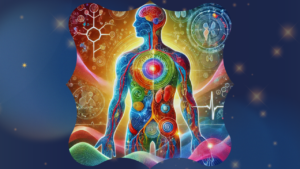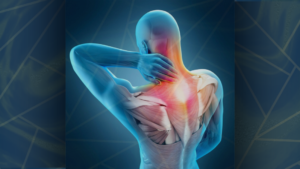In a world where children are nurtured in ignorance of the profound connection between their physical and emotional selves, the concept of integration remains foreign. Mental and emotional integrity are often treated as separate from the body’s structural health, perpetuating a commonplace detachment between multiple, essential facets of wellbeing. This lack of integration fosters misunderstandings of stress, often scapegoated as the root cause of emotional and physical turmoil. But what if stress per se is not the culprit?
What if it is merely the surface expression of deeper physiological imbalances – imbalances that demand our attention? At Vibrant Health Education, we ask: why is this detachment so prevalent, and how can we guide children towards the integration they were never taught to achieve?
The body is a remarkable truth-teller, serving as a living map of our mental and emotional history. Psychosomatics reveal how unresolved emotions and inner conflicts manifest physically, forming patterns of tension often referred to as “body armouring”. These manifestations are never coincidental or random; they are precisely located, with every ache, spasm, or rigidity telling a story of suppressed or unresolved issues.
Unresolved emotional energy, in its raw kinetic form, becomes structuralised within tissues, converting into potential energy stored in the musculoskeletal system. This stored tension often presents as spasms – localised contractions that act as warning signals. Over time, these spasms disrupt normal function, creating chronic patterns of strain that ripple through the body. What may begin as a stomach ache, muscle tightness, or unexplained pain can evolve into more serious degenerative conditions later in life, if left unaddressed. The body, in essence, communicates its needs and unresolved burdens through these signs, or “patterns of tension”. VH Education wants to urge a culture of decoding this language sooner rather than later before these imbalances can rigidify in our bodies and take root.
Children are increasingly caught in a whirlwind of external pressures, such as; academic expectations, the curated realities of social media, and the weight of family expectations. These forces place an immense strain on their emotional landscape, creating what we at VHE call a “crisis of emotional integrity + resilience”. This crisis is often conflated with the broader concept of “mental health”, but it is fundamentally about the fragmentation of the ‘self’. When children are not taught to connect their emotional experiences with their physical sensations, they lose the ability to interpret the messages their bodies are sending. Fatigue, lack of focus, and behavioural issues are not isolated problems; they are symptoms of a deeper disconnection.
Stress, commonly viewed as an inescapable burden, is misunderstood. It is not a passive, external force but, rather, an active response to pressure. The way children are taught to respond to stress determines whether they succumb to emotional fragmentation or use it as a stepping stone toward growth. If we redefine stress as a signal – a call to re-integrate the “psyche” and the “soma” – we can empower children to harness their challenges.
By treating stress as an indicator rather than an affliction, we can help children perform a kind of “self-MOT,” identifying areas of disconnection and reintegrating their mind and body. This approach unlocks the potential energy stored in their physical and emotional “armouring,” allowing it to be redirected toward developing skills, talents and a stronger sense of self. It is this psychosomatic understanding of health that can turn stress from a source of fragmentation into a pathway for self-integration and resilience.
At VHE, we advocate for self-integration as a vital skill that bridges the gap between emotional awareness and physical health. Our holistic approach centres on equipping children with the tools to navigate their inner and outer worlds through three key pillars: emotional literacy, body awareness, and an understanding of psychosomatics. Emotional literacy empowers children to identify, name and process their emotions, transforming abstract feelings into tangible insights that foster resilience and self-regulation. Body awareness, in turn, teaches children to recognise physical manifestations of ‘dis-ease’ – aches, fatigue, or patterns of tension – not as random occurrences but as meaningful signals from the body. These signals, often overlooked, are the body’s way of communicating unresolved burdens that demand attention. By understanding psychosomatics, children can connect these emotional and physical cues, learning to reintegrate their mind and body through self-regulatory processes.
The foundation of this approach lies in the principles that releasing structural rigidity restores balance. The musculoskeletal system, as the body’s primary line of defence against stress, is particularly vulnerable to accumulated emotional responses. When unresolved emotions remain unprocessed, their kinetic energy is stored as potential energy within soft tissues, leading to rigidity and tension. Over time, these patterns of stress disrupt the function of tissues, vessels and organs, creating a cascade of imbalances that, if left unaddressed, can develop into chronic conditions.
By teaching children to decode these physical signals and release stored tension, we prevent the layering of spasms that would otherwise accumulate and solidify into longer-term dis-ease. This process not only alleviates physical strain but also liberates the energy trapped in these patterns, transforming its bioenergetic availability – into energy that can be redirected toward joy, creativity and skill development. At VHE, we emphasise the importance of addressing these issues early, while children are still forming their foundational habits, behaviours and perceptions of health. By fostering a culture of emotional literacy, body awareness and psychosomatic understanding, we aim to empower children to proactively care for their wellbeing. This early intervention ensures they are not only prepared to navigate life’s pressures but also equipped to turn those pressures into opportunities for growth and self-integration. Aligning with our motto, “Teach them while they’re young!” – because the earlier we begin nurturing these skills, the stronger the foundation for a lifetime of health and resilience.
At Vibrant Health Education, we are committed to nurturing a culture where children are empowered to decode the language of their bodies and emotions, transforming stress from a passive burden into an active opportunity for growth. By teaching emotional literacy, fostering body awareness, and promoting psychosomatic understanding, we provide young minds with the tools to liberate stored potential and redirect it toward creativity, resilience, and self-mastery.
The foundations we build now will determine the health, autonomy, and capacity for joy in the adults of tomorrow. We invite schools, educators, and like-minded organisations to collaborate with us in reshaping how we approach health education. Together, let’s expand programmes that not only address the challenges children face today but also unlock their potential for a more integrated and vibrant future.
Join us in this movement—partner with Vibrant Health Education to explore our innovative workshops and tailored programmes, and help us build a legacy of wellbeing, one child at a time.




